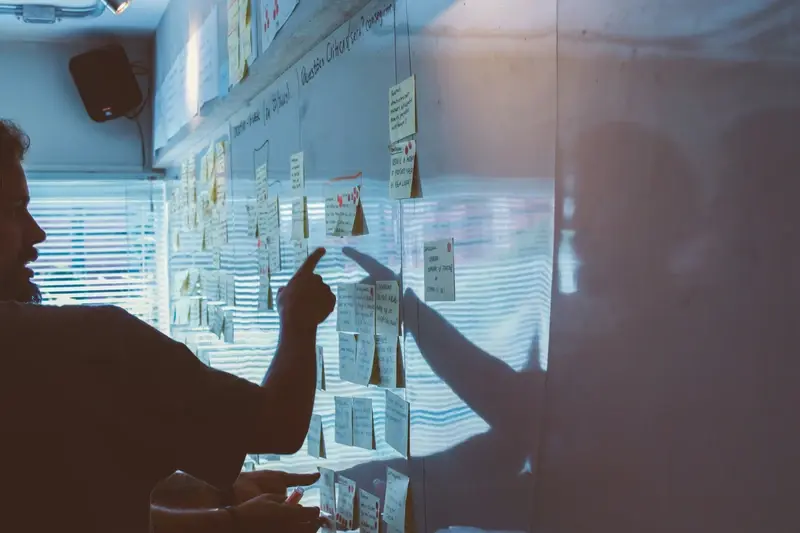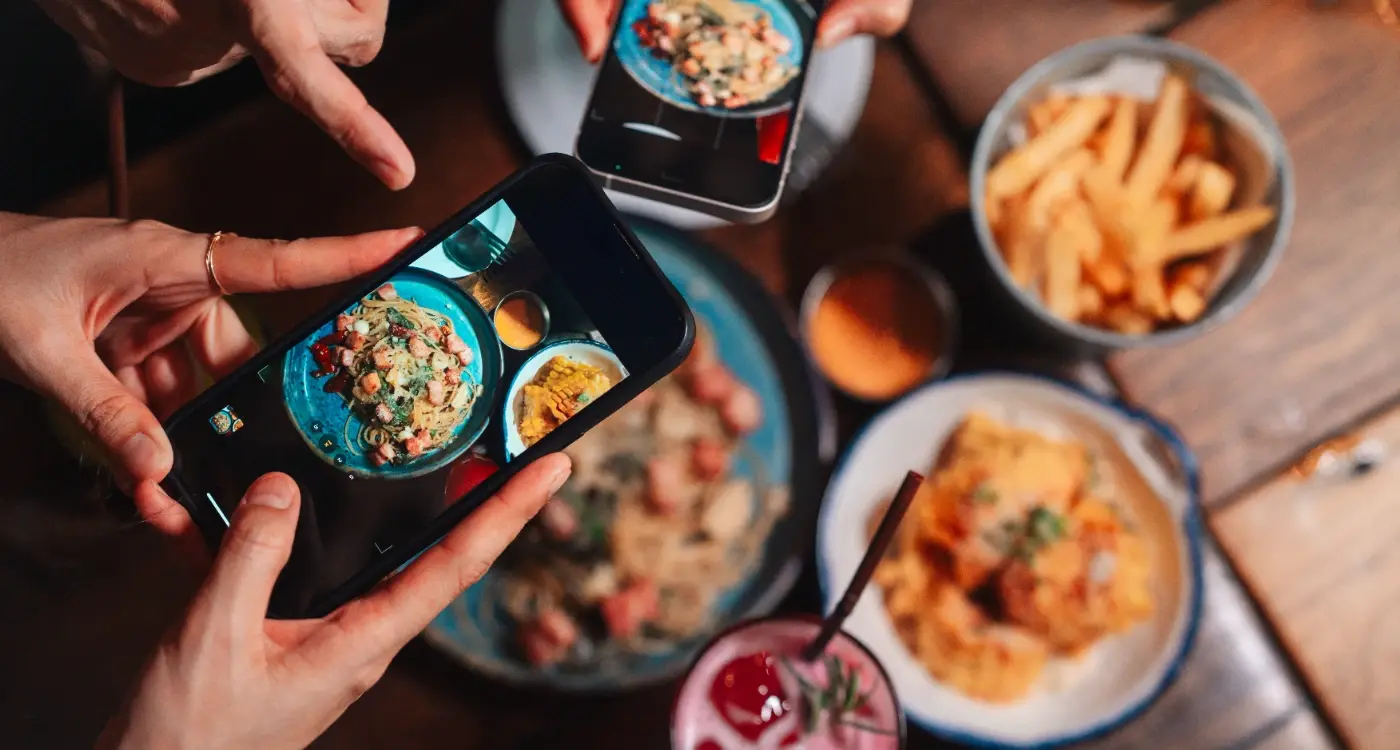What's Different When Building a Travel Guide App and a Booking App?
When Ford wanted to create their FordPass app, they faced a choice that many businesses grapple with: should they build a simple information app that helped customers find dealerships and browse car models, or should they create a comprehensive booking app that let people schedule test drives, book service appointments, and even purchase vehicles? They went with the latter—and it shows just how different these two app types really are.
In the travel industry, this same decision crops up constantly. You've got apps like Lonely Planet that focus purely on travel guides and information, then you've got apps like Booking.com that are all about making reservations and handling transactions. They might seem similar on the surface, but they're actually worlds apart in terms of how they work, what they do, and how complex they are to build.
The difference between a travel guide app and a booking app isn't just what they do—it's how they think about their users and what those users need most
Most people think choosing between these app types is straightforward, but I've seen plenty of businesses get this wrong. They start building one type of app and halfway through realise they actually needed the other. Or worse, they try to do both things at once and end up with an app that doesn't do either job particularly well. Understanding the core differences between travel guide apps and booking apps isn't just about features—it's about knowing your users, your business model, and what you're actually trying to achieve. Get this comparison right from the start, and you'll save yourself months of development headaches.
What Makes Travel Guide Apps Different from Booking Apps
When people think about travel apps, they often lump everything together—but that's a mistake. Travel guide apps and booking apps serve completely different purposes, and understanding this difference is key to building something people actually want to use.
Travel guide apps are all about discovery and information. They help users explore destinations, find hidden gems, learn about local culture, and plan what to do once they arrive. Think of them as your knowledgeable local friend who knows all the best spots. These apps focus on content, recommendations, and helping people make the most of their trip.
Booking apps, on the other hand, are transaction-focused tools designed to get people from wanting something to actually purchasing it. They're built around converting browsers into buyers as quickly and smoothly as possible.
The Core Difference in User Intent
The biggest difference comes down to what users want when they open each app type. Guide app users are in exploration mode—they might spend ages browsing through recommendations, reading reviews, and saving interesting places for later. They're not necessarily ready to buy anything yet.
Booking app users have already decided what they want; they just need to complete the purchase. They want speed, reliability, and confidence that their transaction will go through without any problems.
Different Success Metrics
This fundamental difference affects everything about how you measure success, and understanding which app type serves your specific purpose is crucial:
- Guide apps succeed when users spend time exploring and discovering new content
- Booking apps succeed when users complete transactions quickly and easily
- Guide apps focus on engagement and return visits
- Booking apps prioritise conversion rates and transaction volume
Getting this distinction right from the start will save you from building the wrong type of app for your intended audience.
The Core Functions That Define Each App Type
When you strip away all the fancy features and marketing speak, booking apps and travel guide apps serve completely different purposes. The functions built into each app type reflect what users actually want to accomplish—and understanding this is key to building something people will use.
Booking apps exist to complete transactions. Every feature revolves around helping users find, compare, and purchase travel services. Search filters, price comparison tools, secure payment gateways, booking confirmations, and customer service chat functions are the backbone of these apps. Users open a booking app with their wallet ready; they want to get something booked quickly and move on with their day.
Travel Guide App Functions
Travel guide apps focus on information delivery and discovery. Their core functions include location-based recommendations, detailed attraction descriptions, user reviews, photo galleries, and offline functionality for mobile apps. Some include itinerary planners and social sharing features. The goal isn't to sell anything directly—it's to inform and inspire.
Where the Lines Blur
Here's where it gets interesting: many successful travel apps combine both approaches. They might start as pure booking platforms but add guide content to keep users engaged. Or they begin as information resources and later introduce booking capabilities to generate revenue.
Don't try to build everything at once. Start with the core functions that solve your users' primary problem, then expand based on actual user feedback rather than assumptions.
The technical complexity differs significantly between app types. Booking apps need robust payment processing, inventory management systems, and real-time availability updates. Travel guide apps require content management systems, location services, and often offline functionality. Each demands different development skills and ongoing maintenance approaches.
How Users Interact with Travel Guide Apps versus Booking Apps
The way people use travel guide apps is completely different from how they interact with booking platforms—and understanding this difference will shape every decision you make during development. When someone opens a travel guide app, they're usually in exploration mode. They might be sitting at home dreaming about their next trip, or wandering around a new city trying to figure out what to do next.
Users tend to browse through travel guide apps slowly, scrolling through photos, reading reviews, and saving interesting spots for later. They don't have a specific end goal in mind; they're discovering. This means longer session times but lower conversion rates to actual bookings or purchases.
The Booking App Mindset
Booking apps attract users who've already made up their minds. They know where they want to go and roughly when—they just need to complete a transaction. These users are task-focused and want to get things done quickly. They'll compare prices, check availability, and make a purchase, often within minutes.
This creates very different usage patterns. Booking app sessions are shorter but more valuable from a business perspective. Users might visit multiple times before committing, but when they do convert, there's immediate revenue.
Common User Behaviours
- Travel guide users frequently return to saved content and share recommendations with friends
- Booking app users often abandon their basket but return later to complete purchases
- Guide app users expect offline functionality for when they're exploring without internet
- Booking users need real-time information and instant confirmation of their purchases
- Guide users tolerate slower loading times but booking users will leave if pages don't load quickly
These behavioural differences affect everything from your app architecture to your marketing strategy. You're building for two completely different user journeys, each with their own expectations and success metrics, and proper onboarding practices for each app type become essential.
Technical Requirements and Development Challenges for Both App Types
When I'm working with clients who are deciding between building a travel guide app or a booking app, the technical side of things often becomes the make-or-break factor. Both app types share some common ground—they need maps, location services, and solid content management systems. But that's where the similarities end.
Travel guide apps are like digital magazines that need to work offline. You're dealing with massive amounts of content storage, image optimisation, and the tricky business of keeping everything updated across multiple destinations. The real headache comes with setting up databases for offline functionality; users expect to access their guides without internet, which means clever data syncing and compression techniques.
The Booking App Challenge
Booking apps, on the other hand, live and die by their integrations. You're not just building an app—you're building a bridge between users and multiple third-party systems. Payment gateways, hotel APIs, airline reservation systems, car rental platforms. Each one has its own quirks, rate limits, and potential failure points.
The biggest challenge with booking apps isn't the user interface—it's making sure that when someone clicks 'book now' at 2am, everything actually works seamlessly behind the scenes
Security becomes paramount with booking apps because you're handling sensitive payment information and personal data. This means PCI compliance, SSL certificates, and robust fraud detection systems. Travel guide apps don't typically need this level of security infrastructure, but they do need rock-solid content delivery networks to handle image-heavy content efficiently. Both app types require different skill sets from your development team, different testing approaches, and frankly, different budgets to get right.
Revenue Models and Business Considerations for Travel Apps
Here's where things get interesting from a business perspective—travel guide apps and booking apps make money in completely different ways. Understanding these revenue models is absolutely critical when you're deciding which type of app to build.
Booking apps have what I'd consider the more straightforward revenue model. They earn commission from every hotel room, flight, or rental car booked through their platform. It's typically anywhere from 10-25% per transaction, which can add up quickly when you're processing thousands of bookings. The beautiful thing about this model is that it scales directly with usage—more bookings equal more revenue.
Travel Guide App Revenue Streams
Travel guide apps need to be more creative with their monetisation, and maintaining good user experience while generating revenue becomes a delicate balance. They can't rely on transaction fees, so they need multiple income streams:
- Premium subscriptions for offline maps and detailed content
- Advertising from local businesses and tourism boards
- Affiliate partnerships with booking platforms
- Sponsored content from destinations and attractions
- In-app purchases for specialised guides or features
The Reality Check
Building a profitable booking app requires massive scale and strong relationships with suppliers. You're competing with giants who've spent millions building their networks. Travel guide apps offer more flexibility but need consistent user engagement to generate meaningful advertising revenue.
The development costs differ too—booking apps need complex payment systems, fraud protection, and real-time inventory management. Guide apps focus more on content management and offline functionality. Both require ongoing investment, but booking apps typically need larger upfront capital and longer runway to profitability.
Design and User Experience Differences Between App Types
When you're building a travel guide app versus a booking app, the design differences are huge—and I mean really huge. The whole user experience needs to change based on what people are trying to do. With booking apps, users are on a mission; they want to find something, compare prices, and book it fast. Every screen should push them towards that final purchase button.
Travel guide apps work completely differently. Users are browsing, exploring, maybe dreaming about their next trip. They might spend twenty minutes just looking at photos of places they'll never visit! The design needs to encourage this wandering behaviour rather than rush people through a funnel.
Visual Design Priorities
Booking apps need clean, structured layouts with clear pricing information and obvious call-to-action buttons. Think bold colours for "Book Now" buttons and minimal distractions. Travel guide apps can be more visual and content-rich—bigger images, more descriptive text, and softer navigation patterns that let people explore at their own pace.
Navigation Patterns
Here's where it gets interesting: booking apps typically use linear navigation patterns. Search, filter, select, book, done. Travel guide apps need more flexible navigation; users jump between destinations, save things for later, and circle back to content they've already seen.
Always test your app with real users who match your target audience—what seems obvious to you as the developer might completely confuse someone using your app for the first time.
The biggest mistake I see is trying to blend these approaches. Pick your primary purpose and design everything around that. You can always add secondary features later, but trying to do everything at once usually means doing nothing well.
Common Mistakes When Choosing Between App Types
I've seen plenty of travel app projects go sideways, and most of the time it comes down to one thing—people pick the wrong type of app for what they're trying to achieve. It sounds simple enough, but you'd be surprised how often this happens.
The biggest mistake I see is when someone wants to create a comprehensive travel solution that does everything. They want users to discover places, read reviews, book hotels, find flights, and probably order a coffee too. Here's the thing though—trying to be everything to everyone usually means you end up being nothing to no one. Travel guide apps and booking apps serve different purposes, and mixing them together without a clear strategy is asking for trouble.
The Most Frequent Missteps
- Assuming you need booking functionality just because other travel apps have it
- Building a guide app when your users actually want to make purchases
- Underestimating the technical complexity of payment processing and booking systems
- Copying successful apps without understanding why their approach works for them
- Focusing on features instead of solving a specific problem for your users
Another common error is not thinking about your business model early enough. If you build a beautiful travel guide app but have no way to make money from it, you'll struggle. Booking apps need partnerships with hotels and airlines; guide apps might rely on advertising or premium content. These aren't decisions you can make later—they shape how your entire app works.
The smart approach? Start with your users' main problem and work backwards. Are they struggling to find good local restaurants, or are they frustrated with complicated booking processes? Once you know that, the app type becomes obvious, and you can follow proven development practices to build something that actually works.
Conclusion
After eight years of building mobile apps, I can tell you that choosing between a travel guide app and a booking app isn't just about picking features—it's about understanding your users' needs completely. The comparison between these app types shows us that they serve different purposes at different moments in the travel journey.
Travel guide apps work best when people want to explore and discover things without pressure. They're perfect for wandering around a new city or planning what to do next. Booking apps, on the other hand, shine when users have already decided what they want and need to make it happen quickly.
The technical requirements we've covered show that booking apps need much more complex systems—payment processing, real-time availability, secure transactions. Travel guide apps can focus on great content and smooth browsing experiences. This affects your development timeline and budget significantly.
What's interesting is how user behaviour differs so much between these app types. Guide apps get used leisurely, often over multiple sessions. Booking apps need to convert users fast before they lose interest or find a better deal elsewhere.
The revenue models tell a story too. Booking apps can make money directly from transactions, whilst guide apps often need to get creative with advertising, partnerships, or premium content strategies.
Both app types have their place in the travel industry, and both can be successful when built properly. The key is matching your app type to your business goals and your users' actual needs—not what you think they need.
Share this
Subscribe To Our Learning Centre
You May Also Like
These Related Guides

What Features Should My First App Have?

What's Different In Building a Restaurant App and a Food Delivery App?



